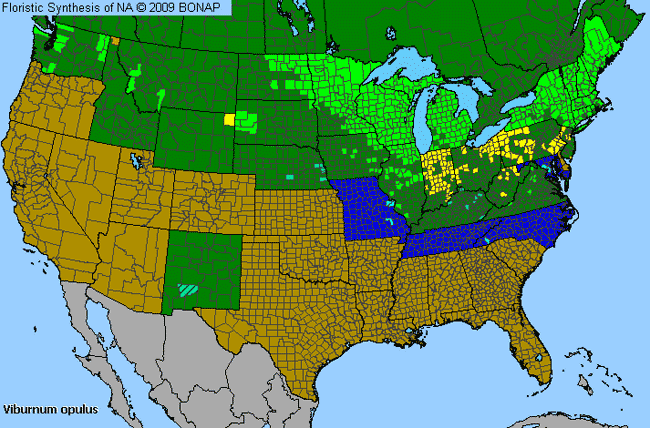Highbush-Cranberry (Viburnum opulus)

Family:
CAPRIFOLIACEAE
Genus: Viburnum
Species: Highbush-Cranberry (Viburnum opulus)
Alternative Names: Viburnum trilobum
Genus: Viburnum
Species: Highbush-Cranberry (Viburnum opulus)
Alternative Names: Viburnum trilobum
Highbush-Cranberry Species Description

This species includes one or more native variety (or subspecies) to North America AND one or more introduced variety (or subspecies).
Allergenicity: Highbush-Cranberry (Viburnum opulus) is a mild allergen.
Pollination: Occurs in following seasons depending on latitude and elevation: Spring to Summer.
Angiosperm - Flowering Dicot: Plants in this group have two embryonic leaves (dicotyledons). Examples of dicotyledons are beans, buttercups, oaks, sunflowers, etc.
Tree: A large plant, not exactly defined, but typically over four meters in height, a single trunk which grows in girth with age and branches (which also grow in circumference with age).
Shrub: A woody plant smaller than a tree, and usually with several stems from the same root.
Weed: Any plant growing in cultivated ground to the injury of the crop or desired vegetation, or to the disfigurement of the place; an unsightly, useless, or injurious plant.
Perennial: Living for many years.
Wetland Plant: Plants growing in aquatic or wetland habitats. These include all known floating, submerged, and emergent taxa, plus those that are found in permanently or seasonally wet habitats.
Woody Stem: Non-herbaceous. Lignified.
Highbush-Cranberry Species Usage

Pharmacological: Used in medicine or pharmacological research.
Butterfly Plant: A plant that is known to attract butterflies.
Related Links

More Highbush-Cranberry (Viburnum opulus) imagesby Jessie M. Harris from BONAP












